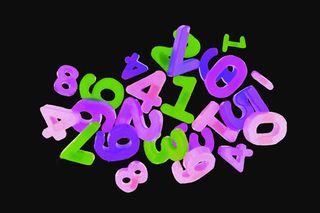
People Count From Left to Right. But There Is a Better Way to Use Numbers, According to Research
Looking at numbers vertically “might help [in] getting our heads around how numbers work a little easier.”

We read numbers just the way we read words in English. It’s always 1, 2, 3, 4, 5, 6; mentally, you processed this as a count from one all the way up to six, because the count starts from the left, the territory of smaller numbers. But if regular programming were to stop, here’s a question: why aren’t we wired to look at numbers differently, say understand them if they were jumbled? Or, if the numbers were positioned like this:
6
5
4
3
2
1
Would this presentation make any difference in the way people process it, and use the said information for making decisions?
That appears to be the consensus of a new study. Researchers looked at our tendency to stick to the “mental number line” (positioning numbers in a horizontal dimension), which in itself is an important metric of how we place information across time and space. Civilizations have been built on the idea that smaller quantities take the left side of this line, gradually increasing to bigger numbers.
But the study, published in PLOS One last week, found there may be a more efficient way to look at, and use numbers. “We found that humans actually process numbers faster when they are displayed vertically – with smaller numbers at the bottom and larger numbers at the top,” wrote researchers from Monash University. In the above example, someone would process the fact that 6 is greater than 1 much faster, as compared to if 1 to 6 were listed horizontally.
The dominance of the left-to-right mental line is what the present study questions. In an experiment, they showed pairs of numbers to participants in different arrangements: say, 1 and 9 were positioned diagonally in one, 2 and 7 positioned vertically, 1 and 5 horizontally. They asked the participants to indicate by way of a joystick where the larger number was located, thus measuring the speed with which the participants picked the right number.
They found that the spatialarrangement of the numbers decided how fast people responded to the question. When the larger number was placed verticallyabove the smaller one, people reached the answer much more quickly than when it was placed on the left or right side.
“This suggests our mental number line actually goes from bottom (small numbers) to top (large numbers),” the study concluded. Instinctively, this makes sense: numbers are indeed displayed vertically in high-intensity fields such as stock market trading.
“Bottom-to-top appears to be how our brains are wired to be most efficient at using numbers – and that might help [in] getting our heads around how numbers work a little easier.”
Related on The Swaddle:
All You Need to Know About ‘Math Dyslexia’
The relationship between space and numbers is one determined by language and culture. Some languages are read from right to left (Urdu, Persian, Hebrew, etc.); some are read from top to bottom (Mongolian, Chinese, certain Japanese, and Korean dialects). There’s no right or wrong way, just a common way that dictates which way rivers of numbers run across cultures.
But over the years, scientific inquiry has established that this relationship of how we view numbers spatially is indeed wired into our brains (and that of other animals like birds too). And indeed, numbers function as an index to the world we live in: we measure days, weeks, months, years, and time in its entirety through them. We calculate when the train or bus will come, or how far person A is from us. Numbers indicate the right dose for medicines in pharmacy; altitude and speed are all determined in the language of these digits for pilots.
“The way we learn to use numbers, and how designers choose to display numerical information to us, can have important implications for how we make fast and accurate decisions,” the researchers in the present study noted.
The findings carry implications not only in the way we teach numbers within the education space, but also how we deal with them as adults. There is an opportunity to teach children how to read mental number lines that run both horizontally and vertically to attune their brains to a more nuanced understanding of numbers. Knowing how numerical information is best-processed inevitably impacts people’s knowledge of health infrastructures, economic systems, our experience of living in a collective set-up. We make decisions based on our ability to grasp numbers, which explains why an inability to properly grasp numerical knowledge is also linked to poor confidence and self-esteem.
Moreover, we already know the human mind is bad at interpreting large numbers, which explains the intellectual challenge of processing, say, millions of deaths due to a pandemic. Interestingly, the brain categorizes anything bigger than the number five as a large quantity to “intuitively recognize, it follows that the brain must rely on different methods of thinking when confronted with much bigger numbers,” one researcher argued.
There’s still much to be explored about the way our brains deal with numbers and how this perception shapes decisions. A question for later when we see numbers sitting on a horizontal plane.
Saumya Kalia is an Associate Editor at The Swaddle. Her journalism and writing explore issues of social justice, digital sub-cultures, media ecosystem, literature, and memory as they cut across socio-cultural periods. You can reach her at @Saumya_Kalia.
Related


Across Cultures, People Associate ‘Attractive’ Faces With More Intelligence, Trustworthiness: Study
